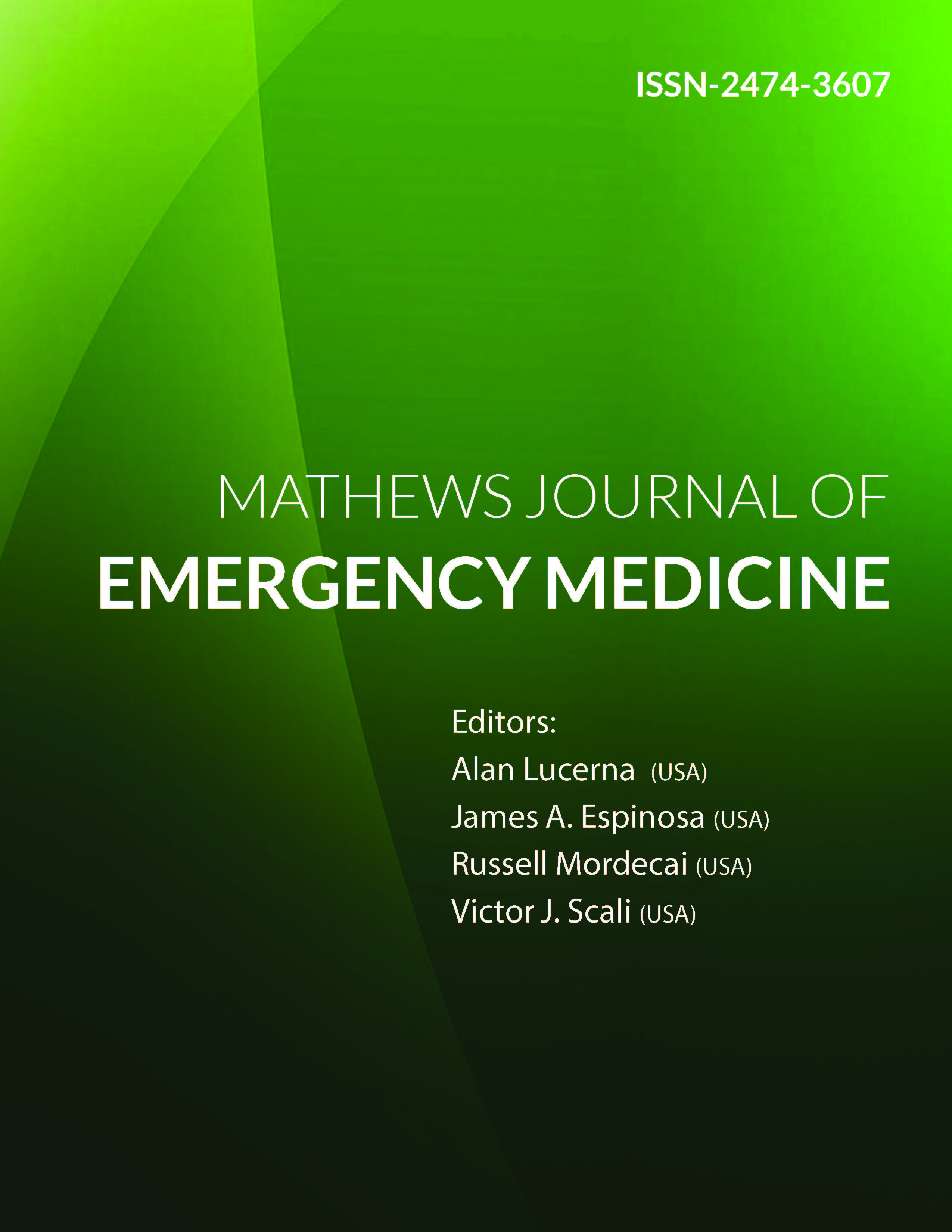
Information Links
Previous Issues Volume 5, Issue 2 - 2020
Critical Skills Mannequin Training for Cricothyrotomy
Victor Scali1, James Espinosa2*
1Victor Scali DO Emergency Medicine Residency Academic Coordinator, Rowan University SOM/Jefferson - Stratford, NJ, USA
2James Espinosa MD, Department of Emergency Medicine, Rowan University SOM/Jefferson - Stratford, NJ, USA
*Corresponding Author: James Espinosa, Department of Emergency Medicine Rowan University SOM/Jefferson - Stratford, NJ, USA, 18 East Laurel Road, Stratford, NJ 08084, USA, E-mail: [email protected]
Received Date: November 05, 2020
Published Date: December 21, 2020
Copyright: Scali V, et al. © 2020.
Citation: Scali V, et al. (2020). Does Computed Tomography of Kidney, Ureter and Bladder (CTKUB) affect the management of patients with suspected renal colic in Emergency Department?. Mathews J Emergency Med. (5)2:38.
ABSTRACT
The purpose of this study was to assess whether the low frequency/critically high skill set of cricothyrotomy can be taught to emergency medicine residents at various levels of training. Our study was prospective in design, involving a brief survey concerning years of training, prior experience with cricothyrotomy, sense of comfort with procedure and number witnessed. Participants were emergency medicine residents PGY 2-5. After the survey, participants watched a demonstration video. Cricothyrotomy was then performed by participants on a mannequin using a preassembled cricothyrotomy kit, up to a maximum of 10 attempts. Successful performance was defined as 40 seconds or less as per the training model of Wong et al. When participants were pooled by attempt, the overall reduction in time performance reached a plateau by the 5th attempt. This plateau is identical to the plateau described by Wong in his study of cricothyrotomy training in anesthesiologists. When success was operationally defined as less than or equal to 40 seconds per attempt, the success threshold was definitely reached by the 2nd attempt and reached a plateau by the 5th attempt. Statistical significance of less than p= 0.01 was reached by the second attempt and reached a plateau (p=0.001) by the 5th attempt.
Participants who reported 1 minimum previous experience with the procedure had a better performance than those who reports no previous experience with the procedure. [p=0.03] These differences became negligible by the 5th attempt. Participants who reported “very comfortable” had a better performance than those who stated “not comfortable”. [p=NS] “Not comfortable” participants had a better performance than those who stated “could do if needed.” [p=NS] These differences became negligible by the 5th attempt. Participants who reported three minimum previous procedures witnessed had a slower performance than those who reported 1 minimum previous procedure witnessed. [p=NS] Those with no previous procedures witnessed had a slower pooled time for the first attempt than those with more experience. [p=NS] These differences became negligible by the 5th attempt. This underscores that training up to the 5th attempt may be the most efficient model in future training work.